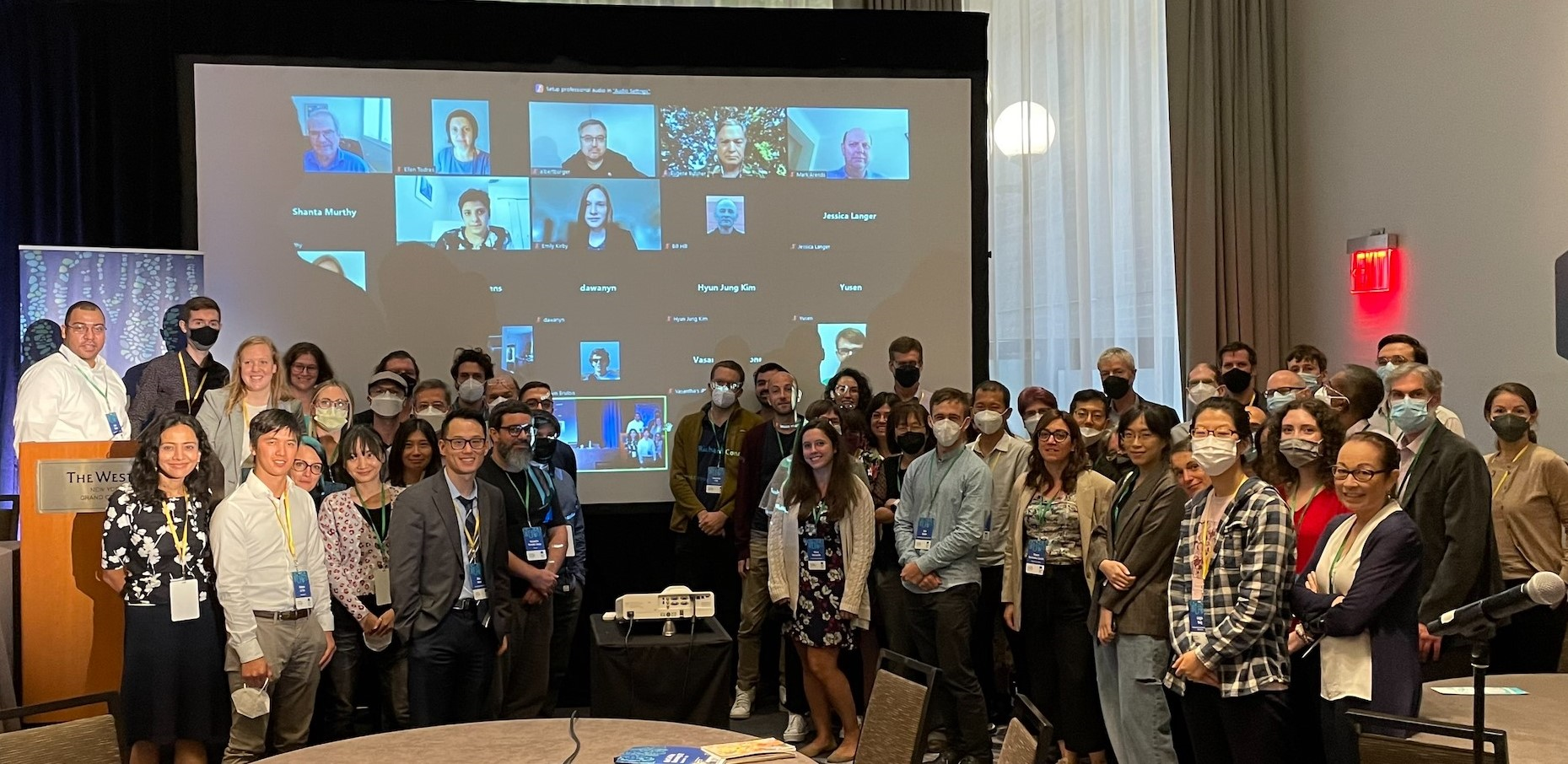In September 2022, Helmsley-funded Gut Cell Atlas researchers gathered to share the latest in their efforts to to catalog the cell types in the intestines and characterize their biology in both people with Crohn's disease and healthy individuals.

In September, the Helmsley Charitable Trust Crohn’s Disease Program hosted a two-day meeting focused on the latest advances from the Gut Cell Atlas initiative, a consortium of researchers funded by Helmsley.
This consortium is a multidisciplinary, international effort to catalogue the cell types in the small and large intestines and to characterize their biology in both Crohn’s disease patients and healthy individuals. The goal is to improve our understanding of the anatomy and physiology of the human gut, and how it differs in Crohn’s disease — and ultimately, to use this knowledge to improve treatment strategies and patient care. The human gut consists primarily of epithelial cells that line the intestines, interspersed with immune and nerve cells and supported by musculature and vasculature. The Gut Cell Atlas is part of the larger Human Cell Atlas effort, which aims to map the cells of the healthy human body.

In September 2022, Helmsley-funded Gut Cell Atlas researchers gathered to share the latest in their efforts to to catalog the cell types in the intestines and characterize their biology in both people with Crohn's disease and healthy individuals.
Technology has advanced in recent decades to give us insight into the biology of cells at single-cell resolution. These techniques are becoming more and more accessible, and they are crucial to atlasing efforts. Single-cell RNA-sequencing allows us to determine which genes are expressed, or active, in individual cells. Spatial methods like MERFISH can tell us which genes are expressed in which cells, and where those cells are located in a tissue. This provides valuable insights about the functions and relationships between different cells in the gut.
The gut is inhabited by trillions of microbes — bacteria, fungi, viruses — that make up the microbiome. The microbiome plays a critical role in health and disease. We are now moving toward integrating information about the microbiome into our atlasing efforts. We were delighted to have a Keynote address from Curtis Huttenhower, Ph.D., from the Harvard TH Chan School of Public Health, who spoke about bacterial communities in the gut and how they differ in people with inflammatory bowel disease (IBD). Genetic analysis suggests that gut microbes make millions of proteins with largely unknown structures and functions. New computational tools are being developed that will enable large scale exploration of this previously uncharted space, which is likely to yield novel insights into the role of the microbiota in Crohn’s disease.
Computational approaches have contributed to significant advances in our understanding of the gut, but researchers still struggle defining best practices for translating biological data into information that can be analyzed by a computer. Dana Pe’er, Ph.D., from Memorial Sloan Kettering Cancer Center, highlighted that it’s important always to keep in mind what questions you want to ask the atlas data — as this affects how you integrate and build an atlas.
Success depends on collaboration and standardization. To make the best use of the data, combining and comparing data sets between research groups will be essential. This requires inclusion of appropriate metadata and quality controls, and standardizing cell type annotations. Coming to a consensus regarding annotations and understanding the benefits and disadvantages of integration are ongoing discussions. As we move forward, it will be useful to keep in mind that the initial goal of the consortium is a good draft atlas to serve as the foundation for further discovery, rather than a perfect completed atlas.
Most data in atlas efforts is currently at the genomics and transcriptomics level — looking at genes and gene expression levels of the cells. Additional multi-omics — including proteomics, epigenomics, and metabolomics, may add valuable information as these efforts continue in the coming years, but many challenges remain to integrate this information and to show causality rather than correlation.
Additionally, the Gut Cell Atlas work funded by Helmsley is focused on a section of the terminal ileum and ascending colon, relevant to disease. Other groups and efforts are underway to characterize the full gut — from the esophagus to the colon. While there is a lot to learn about Crohn’s disease from these samples, we appreciate that this effort is only a small part of a larger effort to characterize the full human gut, and overall human biology. However, the Helmsley-funded Gut Cell Atlas is unique among the Human Cell Atlas consortium in that disease biology has been included and integrated from the start — and we believe this will accelerate advances in understanding Crohn’s disease biology and developing new therapeutic strategies.
Looking ahead, we are aiming to have a draft version of the atlas in 2023 from funded projects. We are excited about efforts to analyze data with new tools and technologies, and our future ability to follow up on findings discussed at the meeting. Keeping our goal of improving the lives of patients center of mind as we advance these efforts, we are most excited about applications of consortium work on diagnostics and therapeutics in Crohn’s disease in the next phase of atlas work.